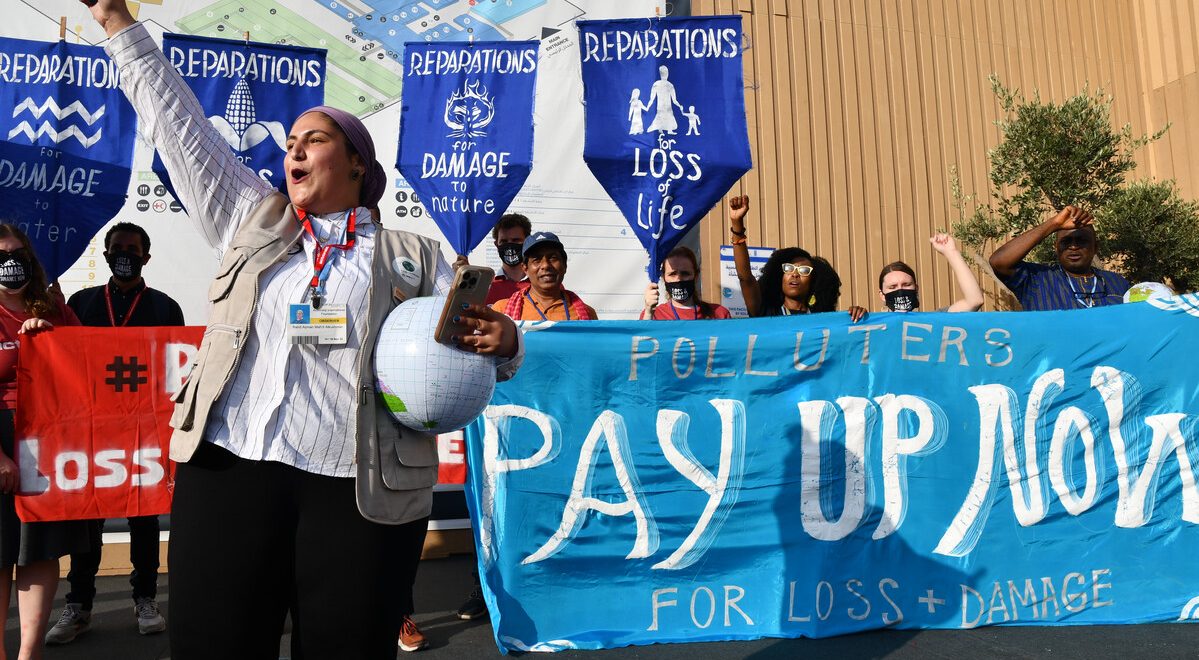The first meeting of the Loss & Damage Transitional Committee (TC) has just finished in Luxor, Egypt. The mandate of the TC is to make recommendations to COP28 (the next major UN climate negotiations, set for Dubai in December this year) about funding arrangements for addressing loss & damage, including arrangements for a new fund.
The majority of the meeting (known as “TC1”) was spent hearing inputs from other international organizations about their work relevant to the TC’s mandate, as well as a sharing of views among members of the committee on how the TC should proceed. The proceedings were extremely friendly, with very little tension coming to the surface at any time. This could very well change as the year goes on and the committee must begin making substantive decisions.
The actual decisions from TC1 were entirely procedural: choosing co-chairs (Outi Honkatukia of Finland and Richard Sherman of South Africa), agreeing to working arrangements, and agreeing to a workplan and schedule for future meetings. The TC agreed to create four separate workstreams, based on paragraph 5 of decision 2/CP.27 which established the TC:
- Establishing institutional arrangements, modalities, structure, governance and terms of reference for the fund;
- Defining the elements of the new funding arrangements;
- Identifying and expanding sources of funding;
- Ensuring coordination and complementarity with existing funding arrangements.
These workstreams will be pursued over the course of three additional TC meetings, two workshops, the 2nd Glasgow Dialogue, and a ministerial consultation, all to occur before COP28 in December:

Without bubbling over into open tension, a clear line is beginning to emerge between many developing country TC members, who want to focus immediately on the specific decisions needs to operationalize the Loss & Damage (L&D) fund, and developed country TC members, who want to discuss much broader questions about existing climate finance architecture and what specific gaps need to be filled. The latter members, of course, have an interest in limiting the scope of the new fund and/or delaying its operationalization. This is especially true for the United States; given that Democrats no longer control both chambers of Congress, a substantial U.S. contribution to a new fund is unlikely to be in the cards for at least the next two years.
Over the course of TC1, some developing country members began raising quite specific questions about the governance and structure of the new fund. Developed country members were quick to acknowledge the importance of such matters but believed that considering them should come after further analysis of the existing landscape of climate and humanitarian finance institutions.
No one would argue with the fact that the new L&D Fund must fit with existing institutions without being too duplicative. But developed countries have long used “we need more studies!” as a delay tactic against actual progress and action, so there is some uneasiness that a similar dynamic is at play in the TC. How quickly decisions can be made at future TC meetings will determine whether or not this uneasiness develops into open conflict.
For us the best path is clear: developed countries must work in good faith at the TC to quickly set up the new fund. The work on broader “financial arrangements,” sources of funding, and coordination with other institutions should proceed in parallel, and must not be treated as prerequisites for beginning work on the fund itself.
As a final note, my civil society observer colleagues who were able to travel to Luxor for the meetings were relegated to an overflow room and forced to watch the webcast of the meeting proceedings – just like me, sitting at home. After some pressure, the co-chairs agreed to allow observers into the meeting room once per day to make short interventions.
This is simply not good enough. The TC should aspire to at least the standard set by the Green Climate Fund, in which observers are allowed to be in the meeting room and can intervene on each agenda item as it arises – allowing for a much more dynamic sharing of experience and exchanging of ideas. By the time TC2 occurs in late May, better arrangements need to be made to accommodate robust observer participation.
[note: the full meeting webcast and associated documents and presentations are available on the UNFCCC TC1 website]

